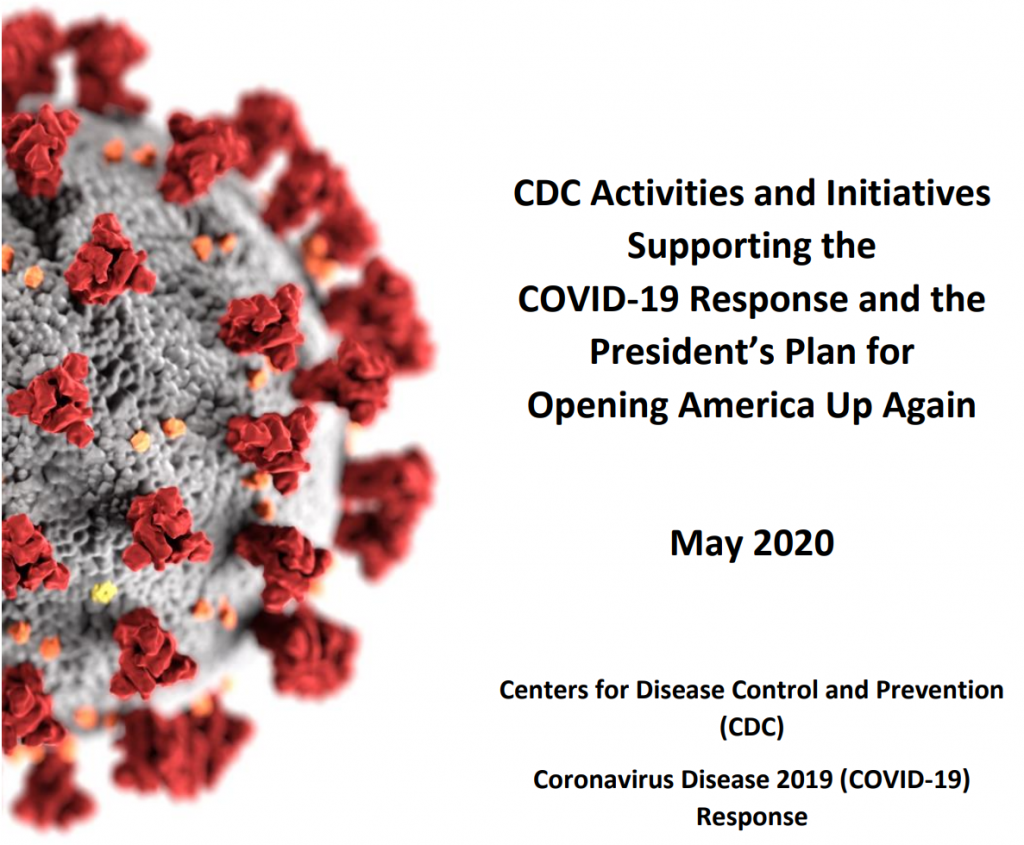Search
Here’s that new CDC guidance for re-opening your business. Plus, we’ve get one heckuva Zoom chat coming on Friday!

Before we talk about this new CDC guidance, mark your calendars for Friday at Noon EDT.
That’s when I’ll be back with another HR COVID-19 Zoom chat. Go ahead and register now (here) while space is still available. My special guest this week is an accomplished HR professional, author, and a member of the SHRM Board of Directors. If HR is your jam, then Steve Browne is your peanut butter.
Or something like that.
Among other things, we’ll get into Steve’s views from the HR trenches over these past few months, not just as VP of HR of LaRosa’s Pizzeria but also through his encounters with other HR professionals. So, maybe, we’ll talk a little about his involvement with SHRM too. And, of course, we’ll take some of your Q&A. Start firing away with that here.
Now, let’s talk about that CDC Guidance.
Specifically, this 60-pager right here.
But, you can skip to Appendix F on page 40. That’s where the Centers for Disease Control and Prevention offer interim guidance to assist establishments as they open.
This guidance supplements the flowcharts that we discussed here last week, with “specific practices that employers may find helpful at particular stages of the COVID-19 outbreak.”
For example, it talks about how bars and restaurants can scale up operations as states and localities permit them to re-open:
Step 1: Bars remain closed, and restaurant service should remain limited to drive-through, curbside take out, or delivery with strict social distancing.
Step 2: Bars may open with limited capacity; restaurants may open dining rooms with limited seating capacity that allows for social distancing.
Step 3: Bars may open with increased standing room occupancy that allows for social distancing; restaurants may operate while maintaining social distancing.
All the while, restaurants and bars should:
- establish and maintain communication with local and state authorities to determine current mitigation levels in the community;
- provide employees from higher transmission areas telework and other options as feasible to eliminate travel to workplaces in lower transmission areas and vice versa; and
- consider assigning workers at high risk for severe illness duties that minimize their contact with customers and other employees (e.g., man-aging inventory rather than working as a cashier, managing administrative needs through telework).
It’s not just bars and restaurants that should pay specific attention to high-risk workers. Instead, the CDC devotes an entire section of the new guidance to that.
The CDC cautions us that “it is particularly important to keep in mind that some workers are at higher risk for severe illness from COVID-19,” such as “individuals over age 65 and those with underlying medical conditions.”
Employers should encourage these high-risk workers to self-identify while avoiding unnecessary medical inquiries and remaining compliant with both the Americans with Disabilities Act (ADA) and Age Discrimination in Employment Act (ADEA) regulations. The EEOC has some coronavirus resources that can help with that.
Plus, employers should follow CDC and the Occupational Safety and Health Administration (OSHA) guidance for reducing workplace exposure for all employees. Also, coordinate with local health officials and other State and local authorities who can help assess the current level of mitigation needed based on levels of COVID-19 community transmission and the capacities of the local public health and healthcare systems.
In terms of ramping up operations, there is also a three-step process:
Step 1: Scale up only if the business can ensure strict social distancing, proper cleaning and disinfecting requirements, and protection of their workers and customers; workers at higher risk for severe illness are recommended to shelter in place.
Step 2: Scale up only if the business can ensure moderate social distancing, proper cleaning and disinfecting requirements, and protection of their workers and customers; workers at higher risk for severe illness are recommended to shelter in place.
Step 3: Scale up only if the business can ensure limited social distancing, proper cleaning and disinfecting requirements, and protection of their workers and customers.
At each step, companies must apply the same prophylactic measures as bars and restaurants and also encourage any other entities sharing the same workspace also follow the same guidance.
I’m approaching 700 words on this post — #toolong — so, I encourage you to review the entire document at your leisure. As the CDC releases more interim guidance, I’ll link to it here and on other social media platforms. My go-to recently is LinkedIn. So, if we’re not yet connected there, let’s fix that.
 The Employer Handbook Blog
The Employer Handbook Blog


